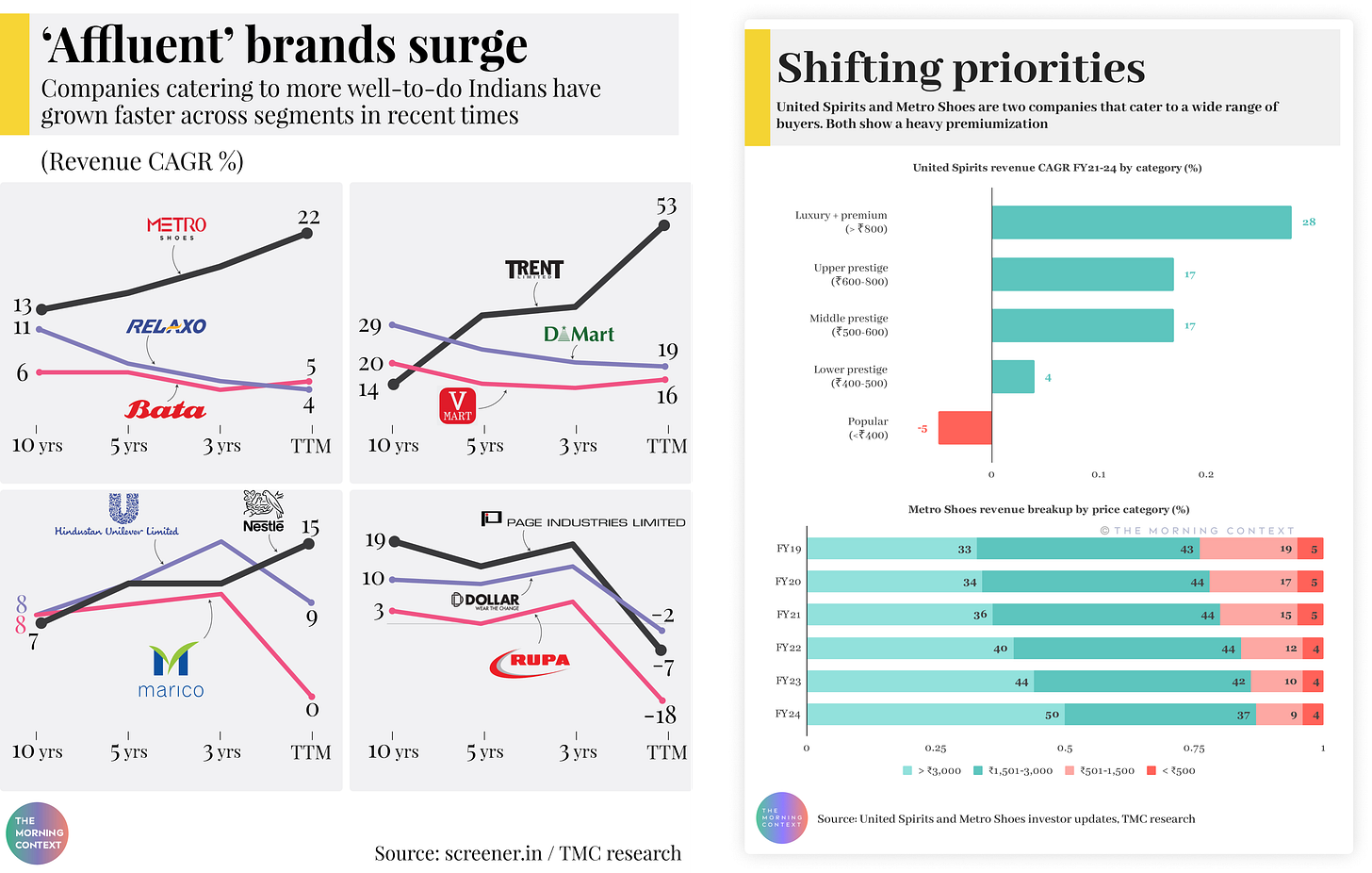Has the Indian consumer had enough?
On the internet there are a few conversation topics that never go out fashion, and are always waiting to bubble up to the surface once agin. One such topic of discussion is about the lack of any tangible benefits / RoI of paying taxes and therefore the frustration of living in India. From inadequate infrastructure to patchy public services, the sentiment of being taken for granted and not getting one's moneys worth are frequently voiced. You should, one strain of the argument goes, pack your bags and head to better pastures as soon as possible.
Different sides of the argument aside, there is no denying that as Indians become more affluent, and are exposed - through travel, being preternaturally online, etc. - to ways of life outside India, there is a higher baseline expectation for what life in India should be. This isn’t a political post, but the parallel with Indian consumers is an interesting and important one here.
We believe this frustration doesn’t stop at governance—it finds a parallel in the Indian consumer market: Indian consumers are also underserved by homegrown brands. At its core, the frustration of taxpayers stems from the feeling of inequity: they pay their dues but don’t receive adequate value in return. Indian consumers, too, experience a similar disconnect when it comes to their interactions with Indian brands. Despite being among the largest consumer markets in the world, Indian consumers are often left with lackluster choices that fail to meet global standards of quality, innovation, or customer service. This failure is true of both international and domestic brands.
International brands have often treated India as a market that doesn’t deserve their best efforts. Many global brands introduce substandard products in India. for example:
Both Indian and global brands will often use palm oil and more sugar in their Indian variants because these can often be cheaper to produce
A report by the Access to Nutrition Index (ATNI) in 2024 showed that “brands including Nestle, PepsiCo, and Unilever, in India and other low-income countries were assessed as part of a global index and found to be less healthy than those in high-income countries
Diapers and sanitary pads in India are generally substandard, with brands pushing back against more stringent QC requirements
India is still regularly used as a dumping ground for older product models. While other markets get the latest and greatest, Indians are left with yesterday’s technology and design. And clearly, it’s not like domestic brands have been much better. Many homegrown companies have settled for mediocrity, leaving consumers with products that are neither cutting-edge nor aspirational.
The arguments that Indian consumers are price-sensitive and value conscious are of course true. In particular, the K-shaped recovery we are seeing in the economy post-Covid has undoubtedly put a stress on a very large number of households in the country, and made value for money critical. It is also probably true that Indian consumers are not that educated or discerning about product quality (though this we would argue is changing).
As we / others who track the Indian economy have noted, the affluent section of the consumer economy has proved to be fairly robust, while mass consumer brands have struggled.
This has been a secular trend across product categories. Unsurprisingly, this has meant that brands are increasingly chasing the rupee spend of the 1% in India. What the ramifications are therefore on the cost-quality calculations for the large mass of consumers products remains to be seen.
Much of the commentary about this poor performance of mass brands has revolved around the sluggishness of middle class demand. This is of course true, but we believe this has completely missed the consideration around consumer wants. Indian consumers will demand more bang for their buck across price points. Our concern is that by undermining their offering to customers, consumer brands might end up in a vicious cycle of alienating the very customers they are trying to serve.
We would love to see better-for-you brands at mass-price points emerge for India. We believe there is a need and market from them.



As a senior who lived in India now a US citizen I feel you are right of the sub standard products of India . But products in USA for instance are too expensive despite their good quality . Refresh tears which is available in India for about 150 Rs is unnecessarily expensive at about 10$ . A good Dhosa in India may be costing Rs 350 to Rs 500 is at $18 with two spoonfuls of sambhar . Indians are cost conscious at home but pay unnecessary higher price for many imported and some cheap imitation items . The Indian Companies which tried to give good quality products had to pull down their shutters